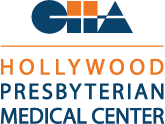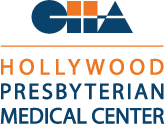According to a growing number of scientists and academics, the third revolution in life sciences is taking shape in the form of Convergence in Healthcare, a movement that calls for the integration of the mathematics, engineering, computing, physical sciences and life sciences disciplines. Convergence in Healthcare seeks to combine the work of experts from these fields to produce more cohesive medical research that could yield more innovative diagnostic tools, treatments and prevention measures against the most pressing diseases and health conditions.
One of the broadest, most widely applicable uses of convergent research is to find treatments for some of the most common diseases causing death in the U.S. today: heart disease, diabetes and Alzheimer’s. The convergent revolution could help medical professionals diagnose and treat these common conditions more effectively — and maybe even identify ways to prevent them altogether.
-
Heart disease
According to the Centers for Disease Control and Prevention (CDC), heart disease kills more people in the United States than any other cause, claiming the lives of more than 600,000 people every year. While many factors contribute to the development of heart disease, including a person’s diet, exercise regimen and smoking habits, the American Heart Association also states that a person with a family history of the disease is at a higher risk of developing it.
Convergence in Healthcare could play an important role in the early diagnosis and treatment of heart disease. The report "Convergence: The Future of Health" suggests the movement could lead to the design of advanced sensors capable of monitoring the heart for early signs of impending heart attacks or stroke, both of which are a result of various forms of heart disease. Whether implantable or wearable, these sensors could detect the presence of factors such as irregular heart rhythms or unusual cholesterol levels.
As an additional benefit, the patient data amassed from the sensors could be analyzed using Big Data strategies to allow doctors to identify previously unrecognized patterns in patients with heart disease. With this knowledge, doctors might be able to predict oncoming episodes of heart attack or stroke before they occur, allowing the patient to seek life-saving medical attention. Heart disease is treatable, but the condition must be identified early enough for treatment to be administered before life-threatening symptoms present. Sensors developed via convergent research may allow scientists to design diagnostic tools to accomplish this goal.

-
Diabetes
According to the American Diabetes Association, nearly 10 percent of the U.S. population is living with either Type 1 or Type 2 diabetes. In 2015, more than 250,000 death certificates in the United States listed diabetes as an underlying or contributing cause of death. This makes diabetes America’s seventh leading cause of death. It is also a disease that places a lifelong burden on patients, requiring them to make significant changes to their eating, exercise and other lifestyle habits. This says nothing of the financial costs patients incur from the purchase of supplies, hospital inpatient care, prescription medications and doctor visits. Altogether, the economic cost of diagnosed diabetes in the U.S. in 2017 amounted to $327 billion, while the average person with diabetes incurred yearly medical costs of nearly $17,000 — about 2.3 times higher than those without the disease.
Given these hardships, this is an area of healthcare in which convergence could yield a significant positive impact. One way "Convergence: The Future of Health" suggests diabetes could benefit from the convergence revolution is through the development of "smart" insulin — an injectable relying on biochemical engineering to respond to the diabetic body’s needs in real time. Convergence may also yield new, simpler ways for diabetes patients to monitor their blood sugar in the form of devices which automatically release appropriate medications when they sense biochemical fluctuations in the body. Early examples of convergent research improving life for diabetes patients already can be seen in the development of mobile apps such as BlueStar by WellDoc, which offers a comprehensive diabetes management system and an educational platform for patients.

-
Alzheimer’s disease
Research from the Alzheimer’s Association shows 5.7 million people in the United States are living with the disease in 2018. Alzheimer’s is also the nation’s sixth leading cause of death and it is on the rise; while deaths from heart disease have declined by 11 percent since 2000, deaths from Alzheimer’s have increased by 123 percent. By 2050, the CDC predicts the number of Americans with Alzheimer’s will reach 14 million, costing the U.S. an astonishing $1.1 trillion. The Alzheimer’s Association contends the United States may save as much as $7.9 trillion with better tools for early and accurate diagnosis.
Convergence may help medical researchers determine new ways of diagnosing and treating Alzheimer’s by facilitating the creation of more comprehensive, three-dimensional maps of the brain, its structure and its neural circuits. This could be done, in part, through a convergent strategy known as optogenetics, which has been tested in animal models. In this technique, specific neurons within the brain are tagged with a light-sensitive protein, which scientists can turn on and off with the use of a flickering light. By using optogenetics within particular brain cells dedicated to the storage of specific memories, scientists may be able to stimulate brain cells in Alzheimer’s patients to halt the degenerative effects of the disease or possibly to even recover lost memories.
 ENGLISH
ENGLISH  РУССКИЙ
РУССКИЙ 


